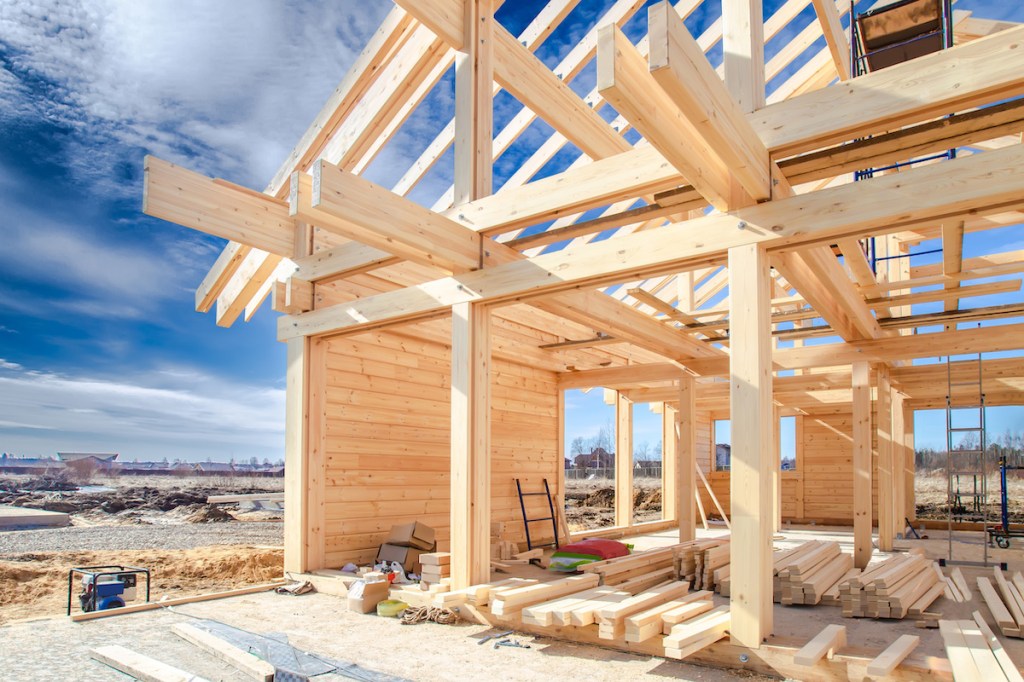The number of new housing units started in October continued to decline, a reflection of the continued downward spiral in homebuilder sentiment, dropping 4.2% from September to a seasonally adjusted annual rate of 1.425 million, according to a report released Thursday by U.S. Census Bureau and the U.S. Department of Housing and Urban Development.
October’s annual housing start rate was down 8.8% on a year over year basis, according to the report. These declines come after a sharp monthly drop of 8.1% in September.
“October was a challenging month with disappointing inflation data — though more recent readings have been more positive — and soaring interest rates. It is no surprise that home building activity reverted back to a downward trend, though the drop was not as severe as it was expected to be,” Nicole Bachaud, Zillow’s economist, said in a statement.
Decreases in both single family and multifamily homebuilding contributed to the slower pace of building, with the single-family sector posting a 6.1% monthly decline and the multifamily sector falling 0.5% from the month prior.
However, the number of multifamily housing starts is up 17.3% year over year, at an annual pace of 556,000, while the number of single family housing starts is at a pace of 855,000, down 20.8% from a year ago.
Regionally, housing starts were down month over month in the Northeast (-34.7%), Midwest (-11.1%) and West (-10.6%), but they were up 6.7% in the South. On a yearly basis, housing starts were down in the Midwest (-13.6%), South (-1.1%), West (-19.6%), and the Northeast (-15.8%).
How lenders can improve business models in 2022
As 2022 proves to be a challenging year for the housing market, lenders are looking to take advantage of market downtime by improving their internal processes. HousingWire recently spoke with James Deitch, CEO of Teraverde, about the changes lenders can make to their business models in order to remain profitable.
Presented by: Teraverde
“Prices for construction materials and labor remain significantly elevated, though material costs have shown some signs of easing. Prices for steel, plywood, copper, gypsum and concrete all remain significantly higher than pre-pandemic, but recorded month-over-month declines in October,” Odeta Kushi, First American’s deputy chief economist, said in a statement.
“On the labor side, according to the October jobs report, average hourly earnings in construction were up 6.6% on a year-over-year basis, significantly above the pre-pandemic average pace of approximately 2.8 percent,” Kushi said.
In addition to elevated prices, builders are seeing fewer buyers thanks to the rising interest rates and continued affordability issues.
“Affordability is also a concern, as rates remain significantly elevated compared with one year ago,” Kushi said. “The average 30-year, fixed mortgage rate in October was 3.8 percentage points higher than one year ago. Holding income constant, the increase in rates reduced house-buying power by approximately $178,000.”
Reflecting these challenges is the decrease in the number of building permits issued. Overall, building permits were issued as a seasonally adjusted annual rate of 1.526 million, down 2.4% month over month and 10.1% year over year. Both the single family and multifamily sectors recorded monthly drops, decreasing 3.6% and 1.9%, respectively.
Despite these challenges, experts believe there are reasons to be optimistic.
“As builders pull back on starting new projects, they will have greater opportunity to bring to market the large backlog of homes in their pipelines that are already under construction,” Kushi said.
Although the number of housing completions was down 6.4% from September to a seasonally adjusted annual rate of 1.339 million, they were up 6.6% year over year, with both the single family sector (up 2.7%) and multifamily sector (up 18.3%) posting yearly gains.






